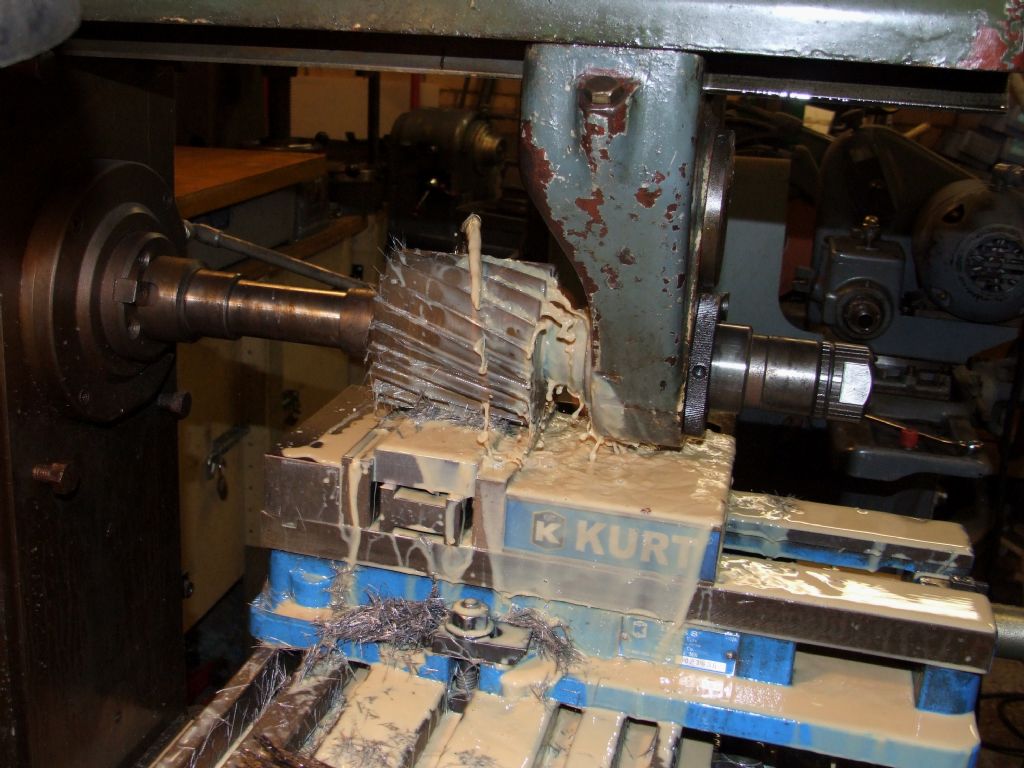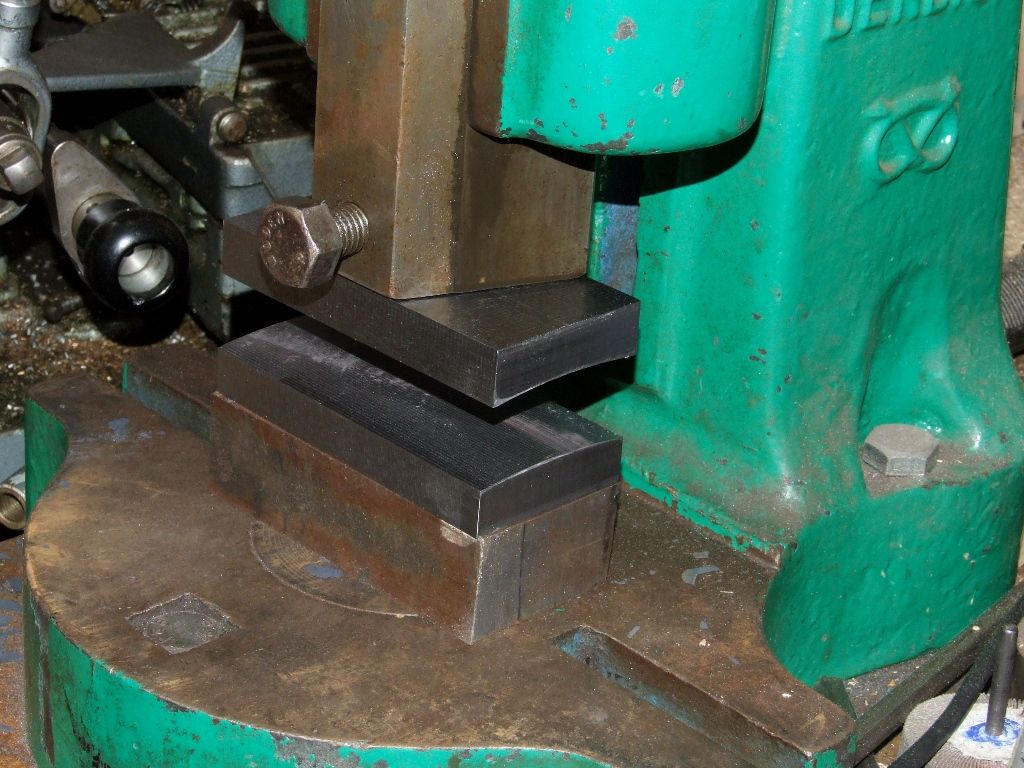Paul M:-
I would not become too hung up on steel grades for the well-established designs most of us work to. By all means use the best you can and indeed the more common grades the professional designer might pick; but it is highly unlikely the majority of the many locos built to designs by LBSC< Evans, etc. have many "special" steels in them, (quite possibly including the designers' original example!); and I have not seen many published model-engineering drawings that actually specify materials to that degree anyway.
Low-carbon (mild) Steel:
EN1A is free-cutting, and suitable for most lightly-stressed components unless having to be hardened. The components in a 3.5"g loco's motion work are small but the forces in them are not all that large either.
Unlikely on a miniature loco but if you fabricate anything by welding, do not use EN1A for it. It will seem to weld all right but the joint is likely to be brittle.
EN3A is a bit stronger but still plain mild-steel – I'd be happy making motion parts from it. And it is weldable.
EN8 is of the medium tensile strength grades – ideal for axles, studs carrying (relatively) heavy loads, etc.
BTW I believe officially the standards have changed from EN-number, but I don't have the equivalents to hand.
Silver-steel –
– (if you can be sure it actually is the precision-ground oil-hardening steel it's meant to be) is for pins etc. that need to be hardened and tempered – and as a tip, lead kept just molten is about right for the tempering colour of blue-purple.
Also used for making small special tools like D-bits for cutting valve seats.
Gauge-plate, or oil-hardening ground flat stock,
– can be thought of as the flat bar version of silver steel and is often recommended for expansion-links as it is hard-wearing. It's often used for making form-tools, especially for turning fancy bits of brass-work like globe-valve bodies.
To get the best out of these alloys they really need to be heat-treated as per the manufacturers' instructions but I am sure most of us get perfectly serviceable results without precision muffle-furnaces and molten-salt baths!
Stainless-steels –
I would respectfully disagree with SillyOldDuffer. There are plenty of applications on an LBSC design for stainless-steel of appropriate type. LBSC, Martin Evans et al tended to call it "rustless steel".
The generic name is of a bewildering range but "our" stockists generally sell the free-cutting (with due care on tooling) varieties, and you use this where rusting would otherwise be a problem: piston and valve rods, screw-down valve spindles, etc.
Chosen with care, it has a higher tensile strength than mild steel, which combined with its corrosion resistance makes it ideal for mounting-studs on boiler fittings and the cylinder and valve-chest covers.
It can be awkward to machine (depending on grade) but if approached with due care can give beautiful results. The golden rule is the tool must cut not rub: abrasion with a mis-set or blunt tool will work-harden the surface of some stainless-steels very rapidly.
Precision-ground stainless-steel is good for bearing pins though it can't be hardened – but as with silver-steel or precision-ground mild-steel, the advantage is lost if you go and turn the stock diameter down to the bearing diameter, as on so many of these old designs!
Brass / Bronze:
For bushes carrying non-hardened steel pins & shafts: gunmetal or leaded bronze (or in fact cast-iron). Them or Phosphor-bronze for hardened ditto.
Boiler bushes must be of gun-metal or phosphor-bronze NOT brass, but brass is OK for fittings like clack-valve bodies. You can use the two bronzes for the fittings too, of course, but plenty of builders do use brass for those, without undue problems.
Boilers:
Again with due respect to Dave, I cannot let his " Steel boilers are difficult to make safely and to the satisfaction of a boiler inspector." go unchallenged, or rather, un-amplified!
It is safe to say we cannot now build steel boilers without being coded welders and using certified materials, with all the entailed rigmarole and costs. We don't want dissatisfied boiler inspectors!
We can build copper boilers – but do NOT use brass even for fittings bushes. Those must be phosphor-bronze or gun-metal. Your club's boiler admirer may wish to view progress to ensure soundness of what will be hidden parts, and ought be able to advise you, too.
NB: if you do build the boiler you must put a lot of heat into the copper, to raise the metal to silver-soldering temperature as quickly as possible, and to complete the joint quickly and smoothly without rushing it. Poor and over-long heating risks ruining the flux and even dissociating the silver solder. The boiler inspector won't be happy – nor will you! (After seeing some forlorn examples, I had cold feet rather than hot metal and contracted my project to Western Steam!)
As SOD (Dave) says, there is plenty of literature available to help you. He cites a few books, also peruse the TEE Publishing catalogue – they sell by post and electronic mail order, and usually have a stand at the major exhibitions. Most of my own model-engineering library is from them.
I hope all that helps – we look forwards to progress reports!
Nigel Graham 2.






